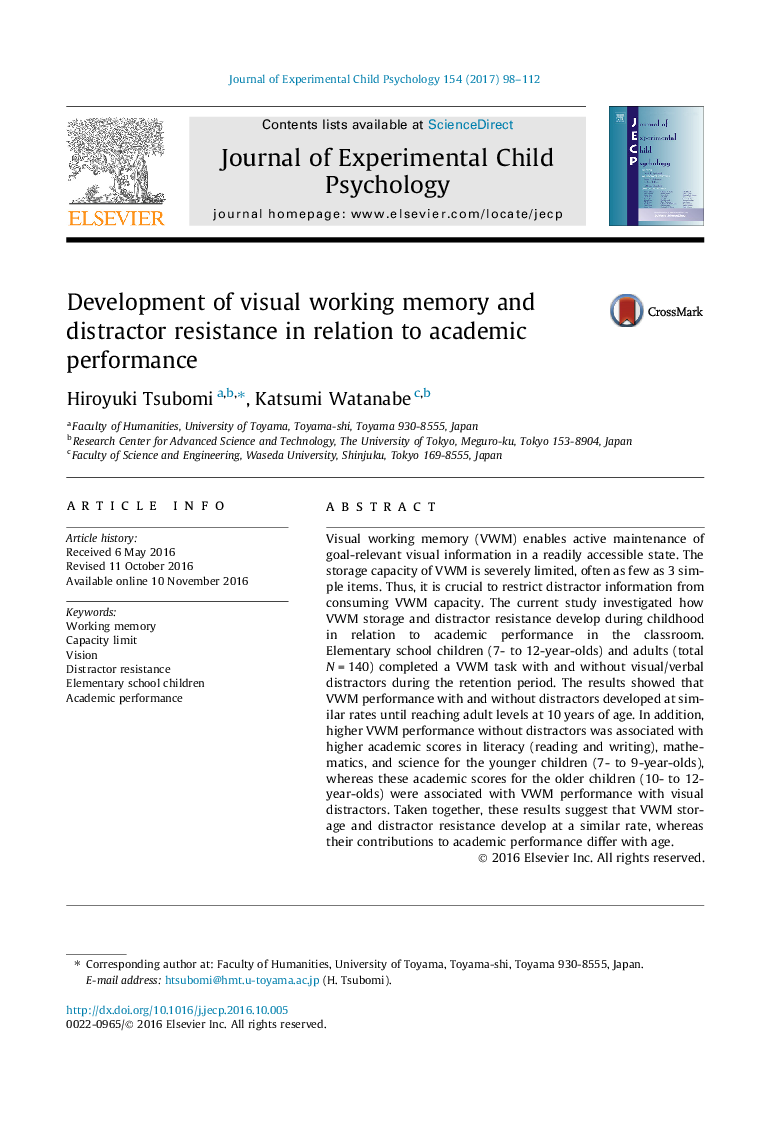| Article ID | Journal | Published Year | Pages | File Type |
|---|---|---|---|---|
| 5040034 | Journal of Experimental Child Psychology | 2017 | 15 Pages |
â¢We examined 7- to 12-year-olds' VWM storage and distractor resistance.â¢VWM storage and distractor resistance reached adult levels at 10 years old.â¢The VWM component contributing to academic performance changed with age.â¢Higher VWM storage and academic scores were linked for 7- to 9-year-olds.â¢Higher distractor resistance and academic scores were linked for 10- to 12-year-olds.
Visual working memory (VWM) enables active maintenance of goal-relevant visual information in a readily accessible state. The storage capacity of VWM is severely limited, often as few as 3 simple items. Thus, it is crucial to restrict distractor information from consuming VWM capacity. The current study investigated how VWM storage and distractor resistance develop during childhood in relation to academic performance in the classroom. Elementary school children (7- to 12-year-olds) and adults (total NÂ =Â 140) completed a VWM task with and without visual/verbal distractors during the retention period. The results showed that VWM performance with and without distractors developed at similar rates until reaching adult levels at 10Â years of age. In addition, higher VWM performance without distractors was associated with higher academic scores in literacy (reading and writing), mathematics, and science for the younger children (7- to 9-year-olds), whereas these academic scores for the older children (10- to 12-year-olds) were associated with VWM performance with visual distractors. Taken together, these results suggest that VWM storage and distractor resistance develop at a similar rate, whereas their contributions to academic performance differ with age.
